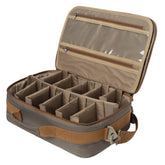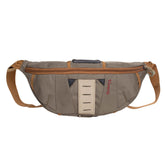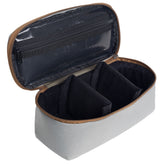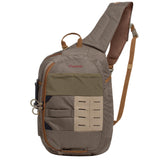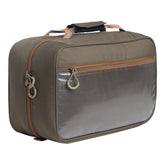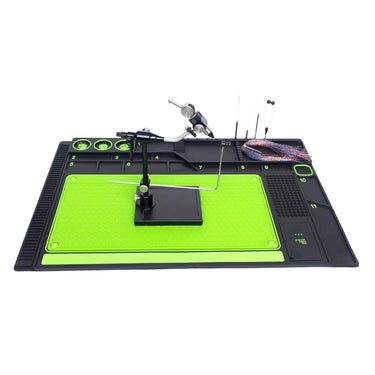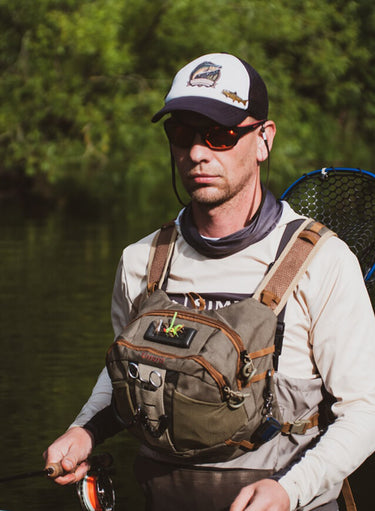Simms, Orvis, Patagonia, and Fishpond Fishing Sling Packs: A Comprehensive Comparison
When it comes to choosing the right fishing sling pack, several brands stand out for their quality and functionality. The Simms, Orvis, Patagonia, and Fishpond packs each offer unique features designed to enhance your fishing experience. Understanding the specific advantages of each option can help me select the perfect pack for my needs on the water.

I appreciate the innovative designs and materials used in these packs, making them not only durable but also comfortable to carry. For example, the Simms fishing sling pack combines accessibility with ample storage, while the Orvis pack boasts impressive organizational features. Each of these brands brings something valuable to the table, catering to various styles and preferences.
Choosing the right fishing sling pack is about personal needs and preferences. Whether I'm looking for lightweight options or more robust storage solutions, evaluating the differences between these popular brands can guide me to make an informed decision.
The Evolution of Fishing Packs

Fishing packs have transformed significantly over the years to meet the needs of anglers. The shift from traditional hip packs to modern sling packs has changed how I carry gear, while advancements in waterproof materials have enhanced my experience during fly fishing.
From Hip Packs to Sling Packs
Initially, hip packs were the go-to option for many anglers. They provided easy access to gear while keeping my hands free. However, comfort during long fishing sessions remained an issue.
Sling packs emerged as a solution, offering more ergonomic designs that distribute weight evenly. These packs rest against my back, allowing for greater movement and less strain. Additionally, many sling packs feature multiple compartments for organization, making it easy to find fly boxes, leaders, and other essentials.
Importance of Waterproof Packs in Fly Fishing
In fly fishing, staying dry is crucial. Water-resistant packs have become essential, especially during wet conditions. I often find myself wading through streams, and having gear that can withstand splashes and rain is a top priority.
The use of advanced waterproof materials ensures that my tackle remains protected. Many modern packs have sealed seams and waterproof zippers, preventing water from seeping in. This feature extends the lifespan of my gear, keeping it dry and functional.
Comparing Top Brands

In this section, I will examine the key features of four leading fishing sling pack brands. Each brand offers distinct advantages that cater to different fishing styles and personal preferences.
Simms Fishing Sling Pack Features
The Simms fishing sling pack is notable for its user-friendly features. It typically includes multiple compartments designed for easy organization. The main pocket is spacious, allowing me to store essential gear while keeping it accessible.
Simms packs often come with adjustable straps that enhance comfort during long fishing trips. Water-resistant materials ensure that my gear stays dry, even in wet conditions.
Moreover, Simms integrates thoughtful design elements, such as tippet holders and external attachment points for tools. This functionality makes it easy for me to switch between tasks while fishing.
Orvis Fishing Sling Pack Design
Orvis has established a reputation for elegant design combined with practicality. Their sling packs usually feature high-quality fabric that stands up to the elements. The shoulder strap is ergonomically designed, providing comfort and support during extended wear.
Notably, the Orvis design emphasizes minimalism. This allows me to focus on my fishing without the distraction of excessive gear. The pack typically includes several exterior pockets, making it easy to access frequently used items quickly.
Orvis also pays attention to aesthetic appeal, ensuring that the pack looks as good as it performs.
Patagonia Durability and Sustainability
Patagonia is synonymous with durability and environmental consciousness. Their fishing sling packs are often crafted from recycled materials, showcasing their commitment to sustainability. This aligns with my values as an environmentally conscious angler.
Patagonia sling packs feature robust zippers and reinforced stitching, which greatly enhance their lifespan. I find that they can withstand rugged outdoor conditions without significant wear.
In addition, many Patagonia packs include waterproof coatings that protect my gear from moisture. This blend of durability and sustainability makes Patagonia an attractive choice for eco-minded anglers.
Fishpond Innovation in Sling Packs
Fishpond stands out for its innovative approach to fishing sling packs. They incorporate unique features designed to enhance functionality.
For example, many Fishpond packs include external net holsters, allowing easy access to nets while wading. Their designs often feature two-tone fabric options, providing both style and visibility.
Fishpond also emphasizes modular storage systems, which allow me to customize my pack for specific fishing trips. The materials are durable and often resistant to abrasion, contributing to a longer lifespan.
This combination of innovation makes Fishpond a versatile option for various fishing situations.
Essential Gear for Sling Packs
When preparing for a fishing trip with a sling pack, I focus on essential items that enhance my experience on the water. Proper organization, integration of tools, and appropriate wading gear are critical to staying efficient and prepared.
Fly Boxes and Organizational Systems
Effective organization in my sling pack starts with the right fly boxes. I choose options that fit snugly and allow for quick access. Waterproof and durable materials are paramount to protect my flies from moisture.
I often use clear, compartmentalized boxes to easily locate specific patterns. This organization helps me quickly change flies without wasting time. Additionally, I utilize zippered pockets and elastic sleeves for storing extra tippet, leaders, and other accessories.
Tools and Accessories Integration
Equipping my sling pack with necessary tools streamlines my fishing process. I make sure to include a good pair of forceps, snips, and a knot-tying tool. These must-haves are attached to the pack via retractable tethers or clips for convenience.
I also integrate accessories like nail clippers and fly floatant into designated pockets. A small multi-tool can be invaluable for unexpected tasks. Having these tools readily accessible allows me to focus on fishing rather than fumbling through my gear.
Wading Gear and Accessories
Wading gear is often essential, so I focus on lightweight and compact options to maximize space in my pack. I always carry a reliable pair of wading boots that are comfortable and provide good traction. Wet conditions can be treacherous, so sturdy footwear is a must.
In addition, I pack essential accessories such as a wading staff and a small first aid kit. The staff aids in stability, while the first aid kit is crucial for safety. Keeping these items organized and accessible ensures I am well-prepared for varied fishing conditions.
Selecting the Right Sling Pack
When choosing a sling pack, it's essential to focus on your specific capacity needs, comfort during extended use, and features that cater to your fishing style. These aspects will ensure a suitable choice for your outings.
Capacity and Storage Needs
I assess the capacity of each pack to determine if it meets my storage requirements. The right size depends on the type of fishing I pursue.
- Small Packs (10-15 liters): Ideal for short trips, accommodating essentials like water bottles, basic gear, and a couple of fly reels.
- Medium Packs (15-25 liters): Suitable for a day of fishing, providing ample space for additional leaders, tippet, and personal gear.
- Large Packs (25+ liters): Best for longer excursions, allowing me to carry extra clothing, food, and larger tackle options.
I prioritize packs with organized compartments to separate gear efficiently. A pack with dedicated pockets for fly boxes and leaders can greatly enhance accessibility.
Comfort and Wearability for Extended Use
Comfort is paramount when I anticipate long hours on the water. I consider the following elements:
- Adjustability: Straps should allow for tailored fitting, which helps minimize irritation. A well-placed sternum strap adds stability.
- Padding: Look for cushioned backs and shoulder straps that offer support without compromising breathability.
- Weight Distribution: An ergonomic design helps balance the load, reducing fatigue over time. A pack that sits close to my body ensures easy maneuverability.
Testing the fit is crucial. I often wear the pack during a brief test around my home to ensure it feels comfortable.
Assessing Features for Personal Needs
Different features enhance functionality for various anglers. I focus on:
- Hydration Solutions: Many packs include pockets for water bottles or hydration systems, which I value while on extended trips.
- Attachment Points: D-rings or loops are essential for securing tools like nets or landing gear without cluttering the main compartment.
- Weather Resistance: A water-resistant material can protect my gear from unexpected showers or splashes. Look for packs that have sealed zippers for added security.
I carefully evaluate these features to find a balance that suits my fishing style while ensuring that everything I need is easily accessible.



